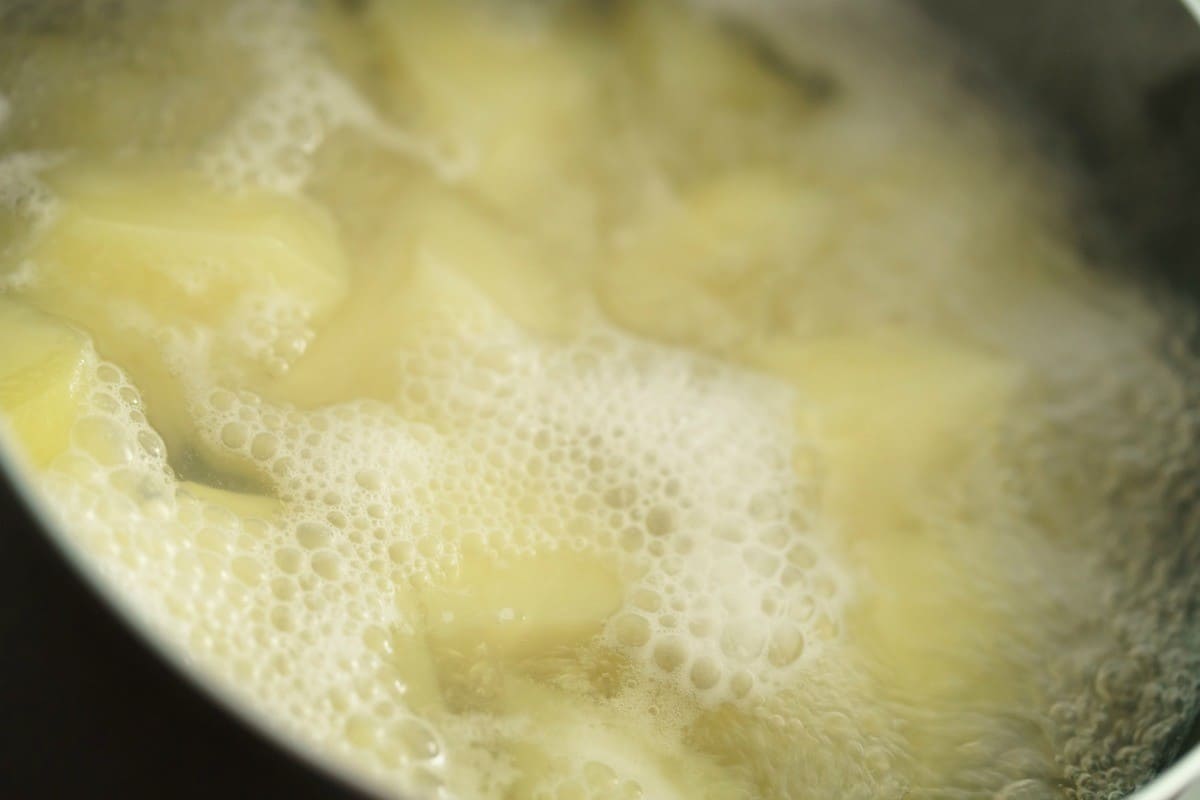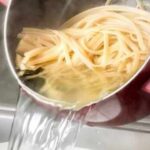Potatoes are tasty and nutritious – without a doubt. Many people love the tuber especially when it is boiled and peeled. It’s a shame that valuable nutrients seep away into the sewage system with the potato water. We explain what you can do with the cooking water from potatoes and what you should pay attention to.
The Federal Ministry of Food and Agriculture (BMEL) has calculated that German potato consumption rose by two kilograms per capita in the 2020/21 marketing year: to almost 60 kilograms of potatoes per German citizen. Around 24 kilograms of this fell into the “fresh potatoes” category and did not end up on the table as French fries, potato wedges or crisps, but was freshly baked, roasted or boiled.
Use potato water instead of wasting it
Especially the latter – namely boiled potatoes – are a perennial favourite. For potato salad, too, you have to boil the potatoes thoroughly first. Too bad the liquid used to boil potatoes almost always goes down the drain.
A better idea: Catch the potato water in a second pot. We have a few ideas for a meaningful (further) use.
Potatoes: It is better to peel them before cooking
Before that, important to know: If you plan to reuse potato water, you should peel the potatoes before cooking.
The reason: Potatoes form the glycoalkaloid solanine, a chemical compound that can cause symptoms of poisoning in humans, especially in the skin, directly underneath and at the sprouting sites. Old, dried-up, germinating potatoes or those with green spots should not be eaten because they can already have too high a solanine content. Potato peels should also only be eaten if they come from firm, fresh potatoes, as recommended by the Federal Institute for Risk Assessment (BfR), among others.
Solanine is mainly found in the shell
Since some of the solanine from potato peelings could be released into the hot water during cooking, to be on the safe side you should only reuse potato water if you have peeled the tubers first and thus removed the most important sources of solanine.
This way you also ensure that no more soil or dirt sticks to your potatoes. This is particularly desirable if the brew is to be used for cooking or baking.
1. Water flowers/plants with potato water
Your flowers and plants not only drink ordinary tap water, but are also happy about used potato water – which of course should be sufficiently cooled. Plants also benefit from the minerals that the potatoes release into the cooking water. In winter, the potato water can be used in potted plants, in summer it is also suitable for watering on the balcony or in the garden.
Important: Do not use heavily salted potato water for watering, as this will damage plants.
2. Potato water as an ingredient for stews, sauces, etc.
Potatoes are high in starch, and so is potato water. If you want, you can (partially) use the carbohydrate-rich cooking water to “flow” into stews, sauces, soups, etc. In terms of taste, it is particularly suitable for hearty dishes. The pinch of salt, which is already in the cooking water, is not a problem here and is even desirable.
3. Use potato water for baking recipes
Some baking recipes quickly require 100 milliliters of liquid or more, for example dough recipes for pizza or bread. Potato water is also available here as an ingredient rich in minerals and starch. And here, too, an (extra) portion of salt is more of an advantage.
4. Soak legumes in potato water
Potatoes contain carbohydrates, protein, potassium, magnesium, and iron, among other things: nutrients and minerals, some of which are released into the water when cooked. For example, use potato water (from previously peeled potatoes) to soak (red) lentils, beans, or chickpeas in it. The legumes also benefit from the minerals in the potato water.
And: After cooking, rice water and pasta water also have a similar composition to potato water and contain a lot of starch. Therefore, they can also be “cooked further” or used for watering.



